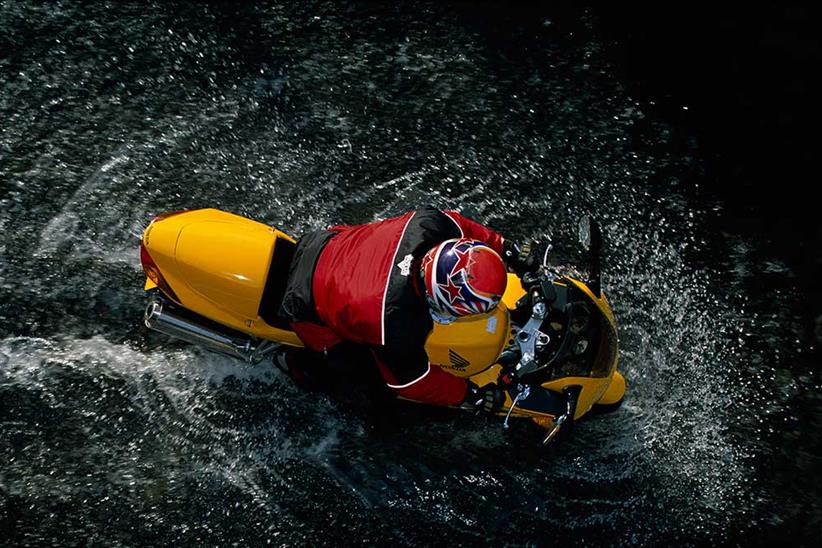Tyre tech talk: Sticky when wet
Rain is a constant threat in the real world. Not a problem if you’ve chosen the right rubber. Michelin experts Tony Charlton and Daley Mathison reveal all…
Manufacturers have reacted to demand by supplying treaded road-legal tyres for track use. These will only give their best grip in the conditions they’ve been optimised for, and it’s essential to keep them in their ideal working temperature window. Outside of this, grip levels drop.
There are also some good crossover hypersport tyres available that are made to perform well on track, but are designed to warm up and retain heat better than a dedicated track tyre as well as having a wider temperature performance window. They offer considerably more life and are generally designed for 50 per cent track and 50 per cent road use. They’re ideal for those riders who ride to and from their trackdays, rather than having the bike in a van and using tyre warmers.
Tony says: All this only makes sense if the tyres live up to the promised performance. If you’ve ridden to your trackday and are riding home again, swapping to a set of wets isn’t an option. At Michelin, we think it’s important to factor that in even on our sportiest road tyres. After all, a trackday that’s been booked isn’t going to be cancelled just because it might rain, and shouldn’t be ruined because your tyres only work well in the dry.
Sacrificing a little dry grip to give more confidence in the wet makes sense. Modern sports tyres like the Pilot Power 3 are excellent in the dry, suit a sportsbike’s performance and are more than capable of handling a trackday, but it’s the recent improvements in how they perform in the wet that’s impressive.
People used to think that to get good wet-weather grip, performance in the dry must suffer. This is less the case with modern sports tyres, as most now feature a high level of silica. Fit the right tyres and the days of not heading out at all on your sportsbike if it starts to rain are long gone.
Daley says: I find it hard to give other riders advice on the best tyre choice, as so much comes down to the individual. How hard are you going to push it? Can you keep the heat in the tyre? I’ve learned as I’ve progressed, but it’s taken years for me to be able to read my tyre’s performance effectively.
The difference between road racing and track racing can be seen in the tyres. For my perfect road racing tyre, I’m looking for something soft on the outside and sturdy in the middle so I can ride it hard on the long straights of the TT and Ulster. It’s also important that my tyres warm up quickly and stay warm all over, as road racing circuits often have only one type of corner. It also means that if you’re not going to be using one side of the tyre very much then it can be much softer on that side.
I’ve been riding on Michelin Power Cup tyres for the last two seasons with great success. They heat up fast and give excellent grip, stability, handling, control, feedback and predictability, which means I can get on with riding the bike as fast as I can and hopefully get on the podium.
Tony Charlton, product technical manager, Michelin
With Michelin for 25 years, Tony is a road rider who also does trackdays, greenlaning and enduro riding.
Daley Mathison, up and coming racer who rides Michelin
The 23-year-old has completed the TT and this year got his first international win at the Ulster GP, as well as victory at the Welsh Open.


